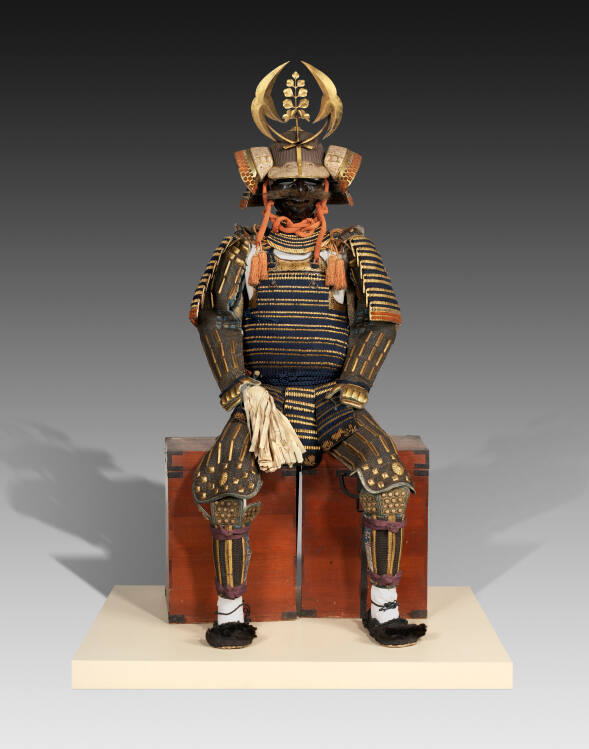Suit of Armor
- S21
This type of armor is known as tōsei gusoku (“modern equipment”), first developed in the late 1500s. Relatively light and flexible, it nonetheless provides superior protection. Iron scales sewn together with silk ribbons form the breast and backplate. Iron chain covers the limbs. The crest projecting above the helmet identified the wearer, whose face would be covered by the mask. The figure holds a baton topped with paper strips, a symbol of command. The extensive gilding and the elaborate decoration suggest that a warlord (daimyo) or high-ranking samurai wore this suit. By the time this suit was created, however, peace prevailed, and armor like this mainly served a ceremonial purpose.
Kametarō Hamano, Kokura, Japan, until 1925;
Purchased from the family of Kametarō Hamano by Yamanaka & Company, New York, by 1932;
Purchased from Yamanaka & Company by The Nelson-Atkins Museum of Art, Kansas City, MO, 1932.
Sadajirō Yamanaka, Exhibition of Japanese Armour and House Ornaments, (New York: 1932).














